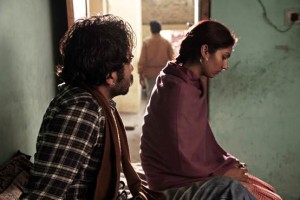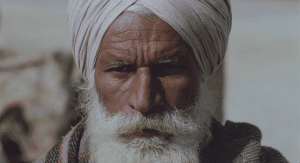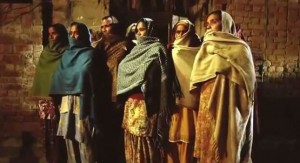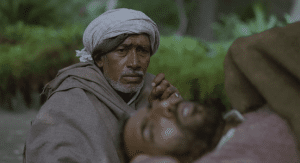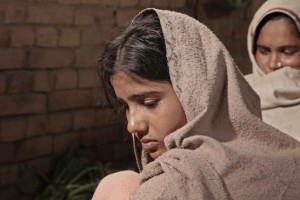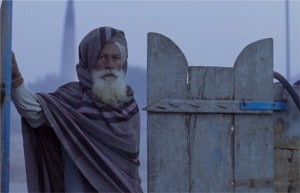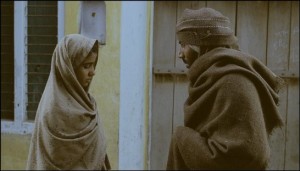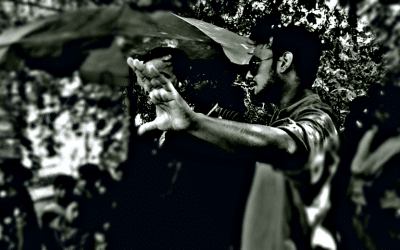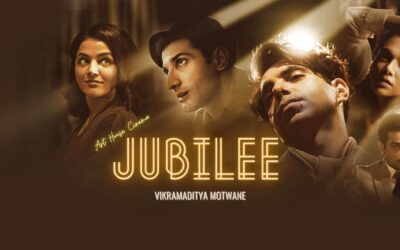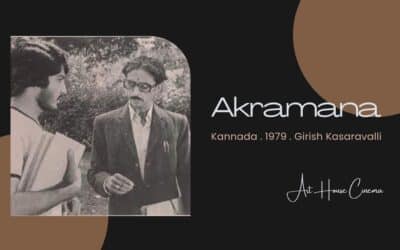Anhe Ghode Da Daan (Alms for a Blind Horse) is a 2011 Punjabi film directed by Gurvinder Singh. Based on a Punjabi novel by the same name written by Gurdial Singh, this internationally acclaimed film depicts the plight of the farmers and small-time farm labourers in Punjab.
Cast
- Mal Singh —————————- Father
- Samuel John ———————— Melu
- Serbjeet Kaur ———————– Dayalo
- Dharminder Kaur —————— Mother
- Emmanuel Singh ——————- Bhupi
- Kulwinder Kaur ——————– Ballo
- Lakha Singh ————————- Lakha
- Gurinder Makna ——————– Dulla
Crew
- Direction —————————- Gurvinder Singh
- Production ————————– NFDC
- Story ——————————— Gurdial Singh
- Cinematography ——————- Satya Rai Nagpaul
- Music ——————————– Catherine Lamb
Story
Anhe Ghoda Ka Daan opens on a cold morning in a misty village near Bhatinda, Punjab, capturing a day in the life of a Dalit Sikh family, marginal farmers who live on the fringes of the development Independent India has brought. The house of Dharma is being bulldozed by the landlord who has sold the land to set up an industry. As the tremors of demolition reach the neighbourhood, the family in the centre of the story cannot help but get affected. The old father, along with other elders of the village goes to the village head to plead for the demolition to stop, but they are helpless in front of the arrogant landlord and his gun-toting henchmen.
Back in the city, the elder son of the family, Melu is trying to earn his living as a rickshaw puller. However, his migratory escape has not given him much happiness and he yearns for the village he has come from. Defeated by circumstances, he decided to come back to the village. Ironically at the same time, unable to fight the landlords and finding no support within his community, the father leaves the village for the city.
- Worried that the little money she had saved has been stolen
- Father
- Women stand worried at the sound of gunshots
- A tired Melu sleeps oblivious to the world
- The Daughter
- Father opens the door on a foggy morning
- Meeting
Commentary
Anhe Ghode Da Daan takes you to a Punjab which is very different from the glossy feisty image projected by Bollywood, maybe the Punjab of Govind Nihalani’s Tamas but certainly not the one showed by Karan Johar. This film is very different from the regular fare dished out by the Punjabi Cinema, making it a rare experience. Even though the YouTube upload incorrectly categorizes it as a comedy, the film is very much a serious one.
The film talks about the fringes of society which have been cast away in a never-ending cycle of poverty and neglect. It captures life so realistically that you can literally feel the frustration and helplessness of the protagonists seep into your mind and engulf you like morning fog over mustard fields. This mist which builds up, in the beginning, seems to hover over the whole film, where the film-maker makes the viewer see the unseen.
The scene where a gun is fired, neither the culprit nor the victims are shown on the frame. However one can feel the tension from the women who stand in the street looking apprehensively in one direction, tragedy written in their transparent eyes.
In his treatment of the film, Gurvinder Singh shows a great influence of Mani Kaul style of film-making, with long close-ups and even longer pauses. In the story of a single day, the plot moves lazily, words come few and far in between and the pace is generally sluggish. Silence speaks for itself, dread is built not by background music, but by the building up of this silence which threatens to reach a deafening crescendo. While the sounds are anti-musical, the score created by Catherine Lamb has a haunting appeal to it.
The director lets the camera guide the narrative and the brilliant cinematography by Satya Rai Nagpaul does full justice to it. His visuals disseminate ideas and tell the story with the imagery, be it the cart vanishing in the mist or a procession of turbans and sticks in the streets of the village.
Beautifully directed and shot, Anhe Ghore Da Daan is not a movie to be watched with popcorn and cold drinks. Like meditation, one needs to immerse in it and let the narrative hold one’s hand and guide towards its lanes and by-lanes. A rare piece of supremely intelligent and humane cinema…
Awards
- National Film Awards (2012)
- Best Direction
- Best Cinematography
- Best Feature Film in Punjabi
- Venice International Film Festival
- Abu Dhabi Film Festival
- Special Jury Award
- Black Pearl Trophy
- BFI London Film Festival
- New York Film Festival
- Busan International Film Festival
- International Film Festival of India (2012) – Golden Peacock Award
Trivia
- The film was shot in and around the city of Bhatinda, Punjab
- Most actors in the film are not professional actors but villagers picked by the director to play their parts
Reference
- Wikipedia – Anhe Ghore Da Daan
- IMDB – Anhey Gohre Da Daan
- Cine Punjab – Anhe Ghore Da Daan (2012)
- The Indian Express – Anhey Ghorey Da Daan
- A Reader’s Words – Anhey Ghorey Da Daan- A Review
- Uddari Weblog – Film Review – “Anhe Ghore Da Daan” (‘Alms for a Blind Horse’)
- Bhaswati Ghosh – ANHEY GHOREY DA DAAN—MAKING THE UNSEEN VISIBLE
Online Viewing
Anhe Ghore Da Daan Trailer is available on YouTube


